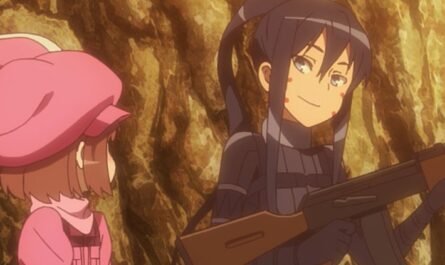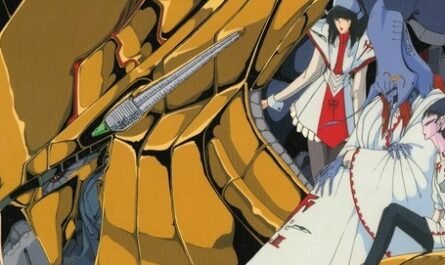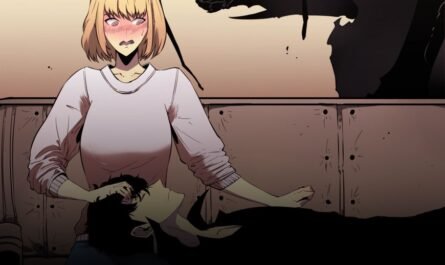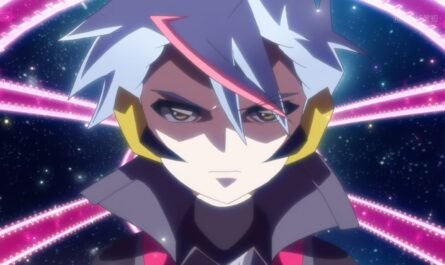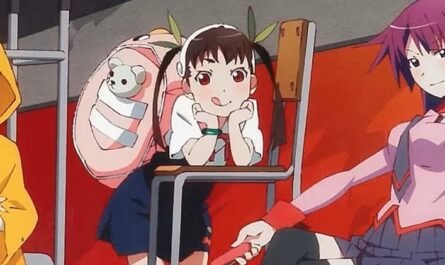From the 23rd of this month, the movie version of “Ghost in the Shell: SAC_2045: The Last Man” will only be released in 30 theaters for three weeks. This work is a compilation of anime series distributed on the video distribution service “Netflix.”
The director is Michihito Fujii, who is active in live-action films such as “Newspaper Reporter” and “10 Years to Live”, which won six Japan Academy Awards (Kenji Kamiyama and Shinji Aramaki, who worked on the series, are credited as general directors. ). We asked Coach Fujii to tell us his true intentions, saying, “I’m glad we tried without creating boundaries.”
Impressed by the attitude of clearly presenting a vision
The season 1 compilation “Ghost in the Shell: SAC_2045: Sustainable War” was released in April 2020. Next, you worked on the Season 2 omnibus “Ghost in the Shell: SAC_2045: The Last Human, ” released in May 2022. What was the impetus for working on “Sustainable Warfare” in the first place?
I met the producer of Production IG at a certain film festival, and one day, he asked me if he would be willing to direct the theatrical version of Ghost in the Shell. I received a call. At first, I guess I mistook her for another “Mr. Fujii”? That’s what I thought (laughs). I knew the title of “Ghost in the Shell,” but I had never seen the movie. So it was exciting when I saw the work for the first time. It was also a time when I wanted to push myself further and try more things, so when I met with Mr. Kamiyama and Mr. Aramaki, I told them, “I might fail, but I want to try.” I was the director of Ghost in the Shell SAC_2045 Sustainable War. When I tried it, it was so much fun that I asked if I could also do the second-season movie version.
The idea of entrusting Mr. Fujii, who had never seen Ghost in the Shell, with the direction of the omnibus, was novel in itself.
That’s right. It would be better for Kamiyama-san and Aramaki-san to do it first. I thought. However, they both said that they had been involved in the Ghost in the Shell series for so long that they could no longer look at it objectively. Could you please create a world of Ghost in the Shell that can be enjoyed by people who have never been exposed to it before? It was a simple order. It would be okay then.
Since the original manga by Masamune Shirow was published in 1989 in the “Young Magazine Extra Edition Pirated Edition” (Kodansha), the “Ghost in the Shell” series has been around since 1989, when director Mamoru Oshii directed “GHOST IN THE SHELL.” (1995), as well as animation and Hollywood live-action films. When you first came into contact with the world of Ghost in the Shell, what did you find interesting?
I have yet to delve into all the works in the series. Still, the original manga is a representative work of Japanese cyberpunk, and it can imagine the future. “Ghost in the Shell: SAC_2045” is also set in 2045, when the Singularity will occur (the rapid evolution and change of science and technology will decisively change human life), and at that time, Japan will… I was impressed by the way he presented his vision of how the world should be. It also depicts the universal human drama. And, using a certain kind of heroine named Motoko Kusanagi, she is “playing” freely and freely. The first “Ghost in the Shell” I saw was “Ghost in the Shell: SAC_2045,” so I thought it was exciting and respected everyone who created the worldview of this work.
What is “Ghost in the Shell SAC_2045”?
“Ghost in the Shell” depicts the activities of Public Security Section 9, an aggressive organization led by Motoko Kusanagi, a cyborg with a whole body prosthetic body, who fights cyber crimes in a near future where people’s will is connected to “cybers.” “Ghost in the Shell: SAC_2045” is set in 2045. The economic disaster that shook all nations and the explosive evolution of AI have plunged the world into a planned and sustainable war. To stop cyber crimes by the new “post-humans” who have suddenly appeared in the cyber society, Public Security Section 9, led by Motoko Kusanagi, heads to Tokyo, which was in ruins during the last war. As the threat of nuclear war approaches due to a nuclear-powered submarine captured by the refugee group “N” led by Takashi Shimamura, a three-way battle between Public Security Section 9, the United States, and the post-humans intensifies.
The movie version has an ending that anyone can understand.
What was the difference between creating an original work and reconstructing a work already completed by others?
When creating my original work, I have a clear message that I want to convey, and if I still need that, the project may work. While responding flexibly to unexpected events, I create them as if I were sending a love letter.
On the other hand, my role in “Ghost in the Shell: SAC_2045” is to make 12 episodes of season 1 and 12 episodes of season 2, a total of 24 episodes, the first part 120 minutes long and the second part 120 minutes. Although we had to throw away more than half of the existing work, we had to think about the structure logically so that the feelings that directors Kamiyama and Aramaki had put into this work were not lost.
Season 1 was easy to summarize, with a beginning, development, and conclusion to connect to Season 2. Still, Season 2 had 12 episodes, and while recovering all the foreshadowing from Season 1, the story progressed further and ended with Burn. It ends with a question posed to the audience. I said to myself, “I want to do a second season,” but I was still making season 2 at that time, and I never thought it would end like that (lol). Can you convey this in just 120 minutes? Seriously? That’s what I thought.
I didn’t understand the last part.
With Tatsuma Furukawa, who worked with me on the direction and editing, I thought about things like, What do you mean?'' andIsn’t this what it’s supposed to be about?” However, during discussions with directors Kamiyama and Aramaki, I realized, “Is that so?” There were many times when I realized that I was wrong.
I wondered if “Ghost in the Shell: SAC_2045” would end with Motoko and the others dealing with the threat of “post-humans,” who suddenly appeared and had fantastic intelligence and physical abilities. Still, it turned out to be such a simple story. It wasn’t a story. This is connected to the subtitle “The Last Man.” Still, directors Kamiyama and Aramaki set the stage in 2045 where Singularity has occurred and the presence of AI (artificial intelligence) has increased. What is happening to humans? If you could choose the world you live in, what choice would you make? That’s a big question to ask.
Directors Kamiyama and Aramaki may have intentionally made the ending provocative, but in the theatrical version, they wanted the ending to be one anyone who watched it could understand. It’s not the director’s intention to feel nervous the moment the lights turn on after the movie ends… I want it to touch the audience’s heart and make them say, “This is what it’s all about, right?” I tried to drive a stake that would allow me to decide the pros and cons. Some scenes have been re-created; this is a movie with something the audience will take home with them.
The second chapter of my film career has begun.
What do you think is the best part of directing a compilation of an anime series?
It’s not necessary to think about anime and live-action separately; in the end, there’s something that creators want to create, and animation is the means to do that, and live-action is the way to do it. On the other hand, many things could be done because it was an anime. It’s difficult to recreate the sense of statelessness in Ghost in the Shell: SAC_2045 in live action, but animation has the freedom to express a variety of worldviews. There were many things I could bring back to making live-action films, such as camera work and background art details. I’m glad I tried it without creating boundaries.
Please tell us about your future aspirations.
The film that was a turning point for me started filming precisely on my 30th birthday, and I was forced to stop filming ten days later, but I was able to reshoot it a year later, and it was released. This is “Blue Return Road” (2018), which I finally achieved. I realized that making a movie is not easy, and it is a miracle that it can be delivered to the audience without any problems from planning to completion. After that, I started working on it with the mindset that I should not compromise when making a film and that I didn’t care if it became my last work.
I faced the movie version of Ghost in the Shell SAC_2045 with the same feeling. For the movie “Seishun 18 x 2: The Road to You”, which is scheduled to be released in May next year, I took on the dream of collaborating with a foreign country for the first time and was able to face the movie beyond language and culture. The second chapter of my film career has begun as I continue to take on new challenges.




